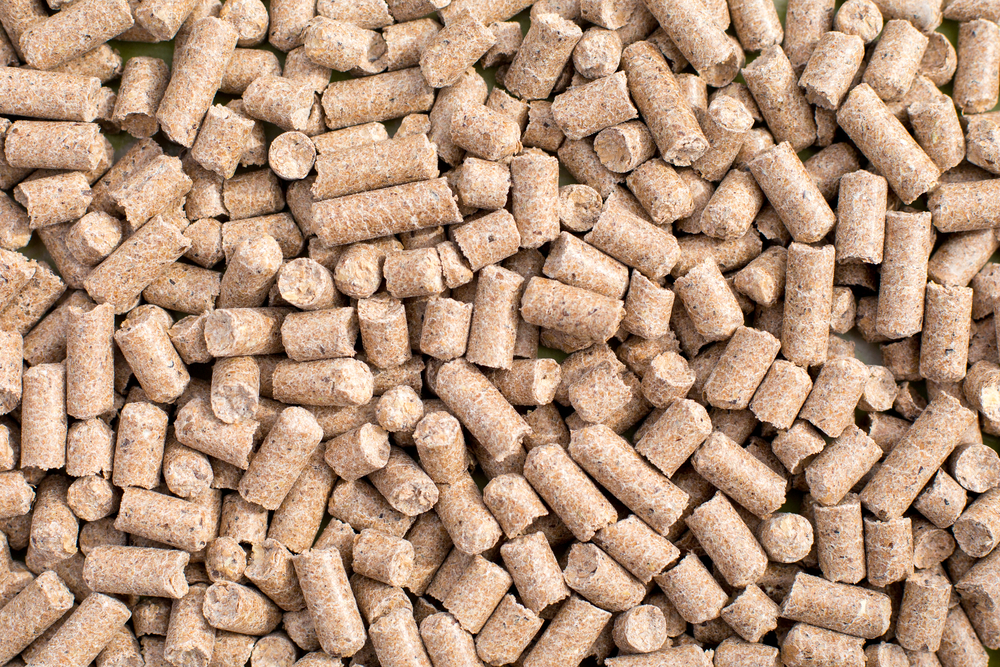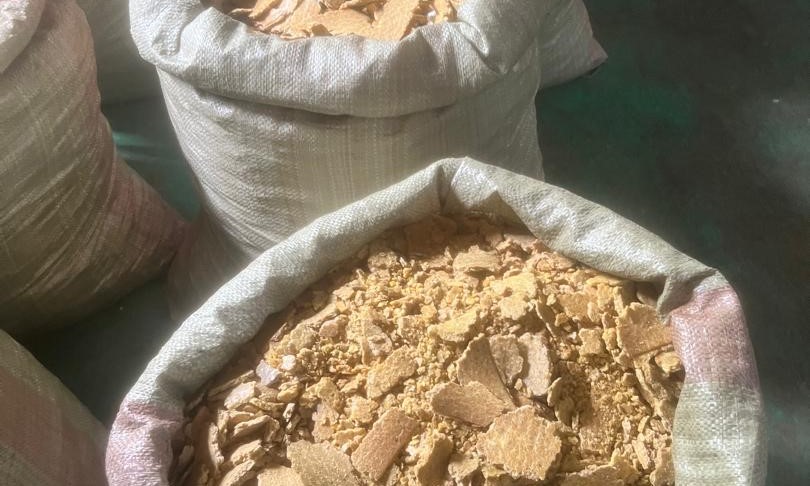VANILLA BEANS | SOYBEAN OIL | SOYMEAL & CAKE | COCOA BEANS | COFFEE BEANS
Soybean Meal and Soya Cake
If you're a Trader or Animal Feed Manufacturer, then let's talk about Soybean Meal and Soybean Cake; two nutrient-dense byproducts of soybean oil extraction.
Soybean Meal, rich in protein (44-48%) with minimal fat content, is a top-notch ingredient for high-quality animal feed, supplying the essential amino acids animals need for growth and development. On the other hand, Soybean Cake, with its high protein content and increased residual oil (7-15%), offers a high-energy feed option.
Known for their beneficial nutritional profile, these soya bean derivatives can significantly enhance your animal feeds offering, delivering superior feed products that promote animal health and growth, and making your feeds business more competitive and lucrative.
What you will find on this Soybean Guide:
- The business case to invest in Soybean Meals
- Difference between Soybean Meal and Soybean Cake
- Chemical Properties of Soybean Meal and Soybean Cake
- Popular Animal feeds Formulations using Soybean Meals
- About Soybeans
- Soybean Growing
- Soybean Oil and
- Where to buy Soya Cake
- As a question about Soybean Meal and Soy Cake in Uganda
So, why should you Invest in Soybean Meals?
 Soya Cake is high Protein Food 4 Chicken
Soya Cake is high Protein Food 4 ChickenGlobally, the market for soybean meal and soybean cake, used primarily as animal feed, is witnessing significant growth, propelled by factors such as a surge in global livestock production, increasing awareness about animal health, and regulatory escalations against the usage of synthetic additives. As per Market Research Future Reports, the global soybean meal market is projected to grow at a CAGR of 4.50% through the 2023 forecast period.
Moreover, an upward trajectory is observed in the consumption of protein-based food around the world, which further strengthens the demand for soybean meal and cake products. From a regional perspective, Asia Pacific, followed by North America, continue to dominate in consumption owing to the high concentration of feed manufacturing units and increased livestock production in these regions.
Shifting the lens to East Africa, the region extracts its soybean meal and cake from the locally grown soybeans to be used primarily in poultry and livestock feed. As per FAO's 2017 data, East Africa's demand for soybeans (both for direct human consumption and for crushing into oil and meal) was projected to rise to 3.9 million tonnes by 2030 from 921,000 tonnes in 2010. This presents enormous opportunities for the growth of the soybean meal and cake market in this region.
Coming to Uganda's market specifically, the consumption of soybean products, including soybean meal and cake, is witnessing growth along with the production of soybeans which stood at 288,000 tonnes as per the 2018 Ugandan Bureau of Statistics data. With the government's support and the entry of commercial feed millers, the demand is set to rise. However, Uganda's local production of soybeans, and subsequently soybean meal and cake, still has untapped potential, signaling room for expansion and investment opportunities.
In conclusion, the outlook is promising both globally and regionally for soybean meal and cake market, particularly driven by the rising demand for animal feed. Expansion in growing soybean, improved processing capabilities, and robust market strategies can position businesses in Uganda to seize these opportunities.
What is the difference between Soybean Meal & Soya Cake?
UGP Soybean Cake Factory Uganda
Soybean, known scientifically as Glycine max, is a leguminous crop rich in edible oil and protein content. The byproducts of its oil extraction process, primarily soybean meal and soybean cake, have gained considerable attention in both scientific and commercial fields.
Soybean Meal:
Soybean meal, a high-protein feed ingredient, is the product obtained by grinding the flakes that remain after the removal of most of the oil from soybeans using a solvent extraction process. Comprising about 44-48% protein, soybean meal serves as an excellent source of essential amino acids. It is vastly used in animal feed due to its nutritional profile, digestibility, and high-energy content. Moreover, its beneficial metabolic effects on animals, particularly poultry and swine, have been reported in numerous research studies.
Soybean Cake:
Soybean cake, on the other hand, is the product obtained from the mechanical extraction of oil from soybeans. This method usually leaves a larger proportion of oil (5 to 10% more) in the product compared to solvent-extracted soybean meal. This high residual oil content boosts the energy value of the cake, making it an efficient feed source for animals.
Differences Between Soybean Meal and Cake:
The fundamental difference between soybean meal and soybean cake boils down to the method of oil extraction and the resultant oil residual content. Soybean cake has a higher oil residual, thereby featuring greater energy richness compared to the soybean meal. However, this also implies a shorter shelf-life for the cake due to the risk of the residual oil becoming rancid.
Conversely, the solvent extraction process used to produce soybean meal results in lower residual oil content. While this might mean less caloric content, it reduces the rancidity risk and hence provides a longer shelf-life. Additionally, solvent-extracted soybean meal typically has a higher protein content than mechanically extracted soybean cake.
In conclusion, both soybean meal and cake are valuable byproducts of the soybean oil extraction process. However, their differences in nutrient content and shelf-life make them suitable for different applications within the animal feed industry. In a world searching for sustainable, economical, and nutrient-rich feed options, the scientific study and exploration of these soybean derivatives hold significant relevance.
Buy Soybean Cake from our Factory in Uganda
Important Chemical Properties of Soybean Meals
Soybean Meal and Soybean Cake, byproducts of soybean oil extraction, have charted a notable path in the world of animal feeds. The secret to their popularity lies deep within their chemical composition, which stands as a conglomerate of essential nutrients.
Beginning with Soybean Meal, the product of solvent extraction process, it is a goldmine of high-quality proteins. Typically, it comprises about 44 to 48% protein, a feature that catapults its nutrition score. Apart from proteins, soybean meal carries about 0.5 to 3% oil, 3 to 3.5% sugars, 6 to 7% moisture, approximately 5 to 7% minerals, and about 35% complex carbohydrates (dietary fiber).
Soybean Cake, on the other hand, is the result of a mechanical extraction process which leaves more oil in the final product. It consists of about 30 to 50% protein and a significantly higher oil content of around 7 to 15%, with the rest accounted for by dietary fiber, minerals, sugars, and a minuscule amount of moisture.
The substantial protein content in both soybean meal and soybean cake makes them highly valuable for animal feed formulation. Proteins are pivotal in the growth, repair, and maintenance of cells in animals. They supply essential amino acids that cannot be synthesized by the animal body, thereby fulfilling a critical nutritional requirement.
The presence of dietary fiber aids in the digestive process of ruminants and prevents the occurrence of illnesses like constipation. Fiber also gives a sense of fullness, reducing the overall food intake and helping manage weight in animals.
The oil content, higher in the soybean cake, provides a concentrated source of energy. It aids in the absorption of fat-soluble vitamins (A, D, E, and K), enhancing these nutrients' availability to the animal body.
Importantly, the sugar content serves as a ready source of energy. The mineral content, including essential macro and trace minerals, plays various roles in the body, from skeletal maintenance to enzymatic functions and metabolic reactions.
Thus, the chemical composition of soybean meal and cake complements the nutritional needs of animals, attesting to their stature as key ingredients in animal feed formulation.
Promoting growth, enhancing health, and ensuring liveliness, these byproducts truly stand as a testament to the old adage, "you're what you eat". Embracing soybean meal and cake in animal feed formulations not only leads to healthier livestock but also makes economic and nutritional sense.
Buy Soybean Cake from our Factory in Uganda
Popular Animal Feeds Formulations using Soybean Meals & Soybean Cake
 Animal Feeds Pellets in Uganda
Animal Feeds Pellets in UgandaI have compiled these are general animal feeds recipes; and as such you may need to be adjusted them depending on your specific animal breed requirements, age, weight, health status, and local ingredient availability.
Always consult your local veterinarian or a feeds expert before switching or modifying your current feeds formulation.
1. Poultry Feed - Layers:
- 580 kg of Corn
- 250 kg of Soybean Meal
- 100 kg of Fishmeal
- 50 kg of Wheat Bran
- 11 kg of Limestone
- 5 kg of Dicalcium Phosphate
- 3.5 kg of Salt
- 0.5 kg of Vitamin & Mineral Premix
2. Pig Feed - Grower:
- 500 kg of Barley
- 200 kg of Soybean Meal
- 200 kg of Wheat
- 80 kg of Fishmeal
- 10 kg of Limestone
- 8 kg of Dicalcium Phosphate
- 2 kg of Salt
- 100g of Vitamin & Mineral Premix
3. Broiler Chicken Feed - Finisher:
- 600 kg of Corn
- 300 kg of Soybean Meal
- 50 kg of Fishmeal
- 30 kg of Soybean Cake
- 10 kg of Limestone
- 8 kg of Monocalcium Phosphate
- 2 kg of Salt
- 0.5 kg of Vitamin & Mineral Premix
4. Cattle Feed:
- 400 kg of Corn Silage
- 200 kg of Soybean Meal
- 100 kg of Alfalfa
- 100 kg of Wheat Bran
- 150 kg of Soybean Cake
- 30 kg of Cottonseed Meal
- 10 kg of Dicalcium Phosphate
- 5 kg Limestone
- 5 kg of Salt
- 0.5 kg of Vitamin & Mineral Premix
5. Sheep Feed - Lactating Ewes:
- 450 kg of Barley
- 200 kg of Alfalfa
- 150 kg of Soybean Meal
- 100 kg of Soybean Cake
- 70 kg of Sugar Beet Pulp
- 20 kg of Molasses
- 5 kg of Limestone
- 3 kg of Salt
- 2 kg of Dicalcium Phosphate
- 0.5 kg of Vitamin & Mineral Premix
Buy Soya bean Cake from our Factory in Uganda
Have a Question or Great Story About The Soybean Guide?
Do you have a Question or Comment about this Soybean Guide? Then Share it!
If you haven't yet found what you were looking for or you need detailed information about the subject matter on this page then... feel free to ask our business travel consultants. |





